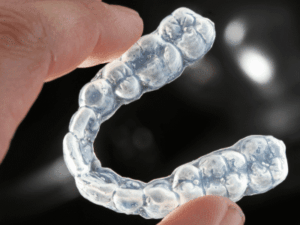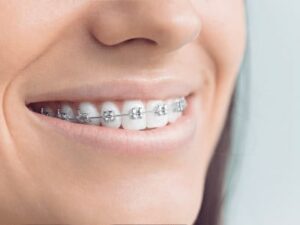Why More Adults Are Choosing Braces
For many years, braces have been associated with kids and teenagers. However, that perception is changing rapidly! More adults than ever are making the choice to invest in their smiles through orthodontic treatment. According to the American Association of Orthodontists, adult orthodontic patients have reached record numbers. But what’s behind this growing trend? Adults are recognizing the incredible

Caring For Your Smile Between Orthodontic Visits
Taking care of your teeth is just as important between orthodontic visits as it is when you’re at the orthodontist’s office. Whether you’re wearing braces, or aligners keeping up with your oral hygiene is crucial to ensuring your treatment stays on track. Here are some helpful tips to care for your smile between visits to Greater Houston Orthodontics

How Long Do You Have to Wear Invisalign?
Invisalign is a popular way to straighten teeth without the need for traditional metal braces. With clear aligners, you can smile confidently while working towards a straighter smile. If you’re thinking about getting Invisalign, you may be wondering: How long will I need to wear Invisalign? The answer depends on your unique dental needs, but treatment can last

Why Straight Teeth Matter for Your Health
Did you know that straightening your teeth can also improve your overall health? At Greater Houston Orthodontics, we’ve seen firsthand how orthodontic treatment can enhance not only appearance but also well-being. In fact, crooked teeth and poor oral health are linked to serious conditions such as high blood pressure, strokes, and even heart disease. By correcting misaligned teeth,

What Is An Orthodontist?
It’s a common misconception that dentists and orthodontists perform the same functions. While both professions share certain similarities and often collaborate, orthodontics is a specialized branch of dentistry focused specifically on correcting dental misalignments. What Does an Orthodontist Do? Orthodontists, like Dr. Amir Davoody, Dr. Rana Mehr, and Dr. Panagiotis Kyteas at Greater Houston Orthodontics, are dentists

Boost Your Oral Health with These Essential Nutrients
We often hear about the importance of vitamins and minerals for our overall health, but did you know they’re also critical for maintaining a healthy mouth? Ensuring you get enough of the right nutrients can make a significant difference in keeping your teeth and gums in top shape. Here’s a breakdown of the vitamins and minerals you need
